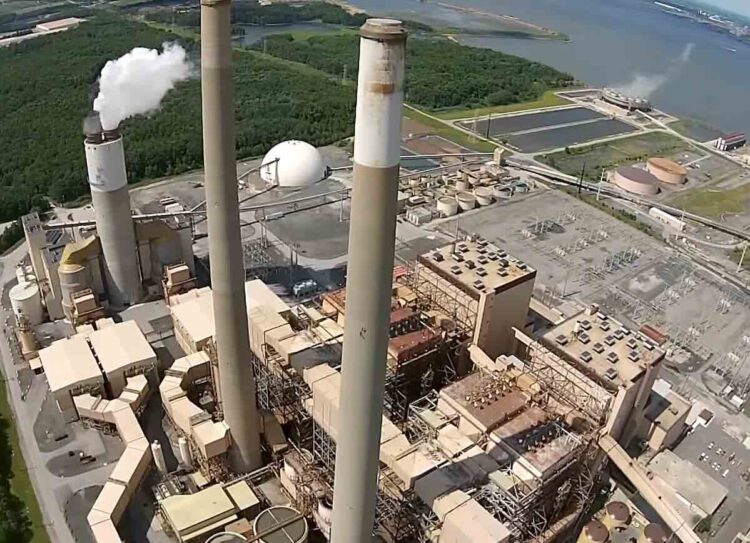
WUWT
Anthony Watts | July 1, 2020
| From the Institute for Energy Research and the department of political sheep herding comes this review of a misguided mess done by a few members of the house who have bought into the “crisis” narrative- Anthony
The House Select Committee on the Climate Crisis has released its Climate Crisis Action Plan. Speaking in front of the Capitol on Tuesday, June 30, Representative Kathy Castor of Florida’s 14th congressional district declared the plan a “transformative roadmap” that would build a “100 percent clean energy economy.” The 547-page document includes a wide range of policy planks, among which is a carbon tax. Let’s take a look at its specifics. Climate Crisis Action Plan (PDF) The environmental and societal costs of greenhouse gas emissions from the burning of fossil fuels are clear, including loss of life and property damage caused by wildfires, stronger hurricanes, and other extreme weather events. When a ton of carbon pollution billows from a smokestack, however, no one pays for that pollution. As a result, industry, investors, and consumers do not internalize the true cost of the choices they are making and have less incentive to choose less-polluting products or technologies. Until the market reflects the true cost of carbon pollution, the U.S. economy will remain biased toward fossil fuel combustion. One way to correct this market failure is to put a price on each ton of pollution. Congress could design a comprehensive climate plan without a carbon price, but a carbon price “percolates through the entire economy, providing an incentive for all decision makers in the economy to look for ways to reduce emissions.” IER’s Take The committee’s carbon pricing principles follow. Carbon pricing can take many forms. The majority staff for the Select Committee offers the following principles for designing an effective and equitable carbon pricing system: 1. Congress should establish a carbon pricing system designed to achieve America’s economywide greenhouse gas emissions reduction goal of net-zero by no later than 2050. 2. Congress should consider a carbon price as only one tool to complement a suite of policies to achieve deep pollution reductions and strengthen community resilience to climate impacts. Carbon pricing is not a silver bullet. 3. Congress should ensure that energy-intensive, trade-exposed domestic industries that are working to reduce pollution remain on a level playing field with foreign competitors that use dirtier technologies. 4. Congress should ensure low- and moderate-income households benefit from a national carbon price. 5. Congress should pair a carbon price with policies to achieve measurable air pollution reductions from facilities located in environmental justice (EJ) communities, which face chronic and acute health impacts from a legacy of industrial development in their neighborhoods. 6. Congress should respect states and localities that have led the nation in climate action, ensure that a national carbon price complements and builds on their programs, and apply the lessons learned from their experiences and other international approaches. 7. Congress should not offer liability relief or nullify Clean Air Act authorities or other existing statutory duties to cut pollution in exchange for a carbon price. IER’s Take 1. The fact that no dollar figure is presented is telling. To reach net-zero in thirty years implies a massive and climbing carbon tax. As analysis follows the release of this report, I’m sure estimates will begin to emerge. They won’t be pretty. 2. The appeal of a carbon tax is its simplicity. If we indeed have the analytical tools to calculate the degree of negative externality that using fossil fuels generates, then the resulting social cost of carbon (SCC) would enable a carbon tax to be something approximating a silver bullet, rebalancing externalized costs to the responsible actor and pegging risk appropriately. Layering a carbon tax on top of existing and new regulations reveals that our confidence in the SCC and in our implementation of the policy is lacking. 3. In other words, a tariff. 4. The ostensible benefits to which the committee alludes would not be the direct result of a carbon tax, but of the allocation of new revenue. See below. 5. Local air pollution is not the target of a carbon tax. 6. There are many positives to the mindset of federalism, but as described here it sounds like businesses and citizens would face a dizzying tangle of requirements when crossing state lines. 7. The grand bargain we’ve been promised by the Republican carbon tax advocates—trading regulations for a tax—does not appear likely. Most, but not all, proposed federal carbon pricing mechanisms generate significant revenue that can be used to invest in communities, research and development, and more. Congress may decide to use some of the revenue to address top priorities, including investing in low-income communities, communities of color, and communities and workers in economic transition; rebuilding America’s infrastructure in a climate-resilient way to support a net-zero economy; financing clean energy and energy efficiency projects to expedite pollution reduction; supporting natural climate solutions and conservation; or funding other recommendations in this report. IER’s Take This plan does not include a rebate, which I find surprising. Without even granting that nod to working Americans, it will be difficult for Castor’s committee to fend off claims that this new tax would hurt the people who are struggling most in this economically-fraught time. For a thorough assessment of different revenue strategies, see this 2018 IER paper with analysis conducted by Capital Alpha Partners. |



